Great Astronomers by Robert Stawell Ball (uplifting novels .txt) 📕
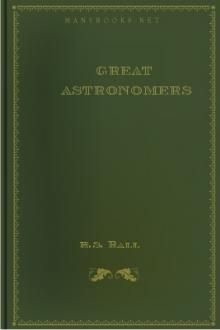
- Author: Robert Stawell Ball
- Performer: -
Book online «Great Astronomers by Robert Stawell Ball (uplifting novels .txt) 📕». Author Robert Stawell Ball
a visit to Dublin, and, as a practical exercise in his Oriental
languages, the young scholar addressed to his Excellency a letter
in Persian; a translation of which production is given by Mr.
Graves. When William was fourteen he had the misfortune to lose
his father; and he had lost his mother two years previously. The
boy and his three sisters were kindly provided for by different
members of the family on both sides.
It was when William was about fifteen that his attention began to
be turned towards scientific subjects. These were at first
regarded rather as a relaxation from the linguistic studies with
which he had been so largely occupied. On November 22nd, 1820, he
notes in his journal that he had begun Newton’s “Principia”: he
commenced also the study of astronomy by observing eclipses,
occultations, and similar phenomena. When he was sixteen we learn
that he had read conic sections, and that he was engaged in the
study of pendulums. After an attack of illness, he was moved for
change to Dublin, and in May, 1822, we find him reading the
differential calculus and Laplace’s “Mecanique Celeste.” He
criticises an important part of Laplace’s work relative to the
demonstration of the parallelogram of forces. In this same year
appeared the first gushes of those poems which afterwards flowed
in torrents.
His somewhat discursive studies had, however, now to give place to
a more definite course of reading in preparation for entrance to
the University of Dublin. The tutor under whom he entered,
Charles Boyton, was himself a distinguished man, but he frankly
told the young William that he could be of little use to him as a
tutor, for his pupil was quite as fit to be his tutor. Eliza
Hamilton, by whom this is recorded, adds, “But there is one thing
which Boyton would promise to be to him, and that was a FRIEND;
and that one proof he would give of this should be that, if ever
he saw William beginning to be UPSET by the sensation he would
excite, and the notice he would attract, he would tell him of it.”
At the beginning of his college career he distanced all his
competitors in every intellectual pursuit. At his first term
examination in the University he was first in Classics and first
in Mathematics, while he received the Chancellor’s prize for a
poem on the Ionian Islands, and another for his poem on Eustace de
St. Pierre.
There is abundant testimony that Hamilton had “a heart for
friendship formed.” Among the warmest of the friends whom he made
in these early days was the gifted Maria Edgeworth, who writes to
her sister about “young Mr. Hamilton, an admirable Crichton of
eighteen, a real prodigy of talents, who Dr. Brinkley says may be
a second Newton, quiet, gentle, and simple.” His sister Eliza,
to whom he was affectionately attached, writes to him in 1824:—
“I had been drawing pictures of you in my mind in your study at
Cumberland Street with ‘Xenophon,’ &c., on the table, and you,
with your most awfully sublime face of thought, now sitting down,
and now walking about, at times rubbing your hands with an air of
satisfaction, and at times bursting forth into some very heroical
strain of poetry in an unknown language, and in your own internal
solemn ventriloquist-like voice, when you address yourself to the
silence and solitude of your own room, and indeed, at times, even
when your mysterious poetical addresses are not quite unheard.”
This letter is quoted because it refers to a circumstance which
all who ever met with Hamilton, even in his latest years, will
remember. He was endowed with two distinct voices, one a high
treble, the other a deep bass, and he alternately employed these
voices not only in ordinary conversation, but when he was
delivering an address on the profundities of Quaternions to the
Royal Irish Academy, or on similar occasions. His friends had
long grown so familiar with this peculiarity that they were
sometimes rather surprised to find how ludicrous it appeared to
strangers.
Hamilton was fortunate in finding, while still at a very early
age, a career open before him which was worthy of his talents.
He had not ceased to be an undergraduate before he was called to
fill an illustrious chair in his university. The circumstances
are briefly as follows.
We have already mentioned that, in 1826, Brinkley was appointed
Bishop of Cloyne, and the professorship of astronomy thereupon
became vacant. Such was Hamilton’s conspicuous eminence that,
notwithstanding he was still an undergraduate, and had only just
completed his twenty-first year, he was immediately thought of as
a suitable successor to the chair. Indeed, so remarkable were his
talents in almost every direction that had the vacancy been in the
professorship of classics or of mathematics, of English literature
or of metaphysics, of modern or of Oriental languages, it seems
difficult to suppose that he would not have occurred to every one
as a possible successor. The chief ground, however, on which the
friends of Hamilton urged his appointment was the earnest of
original power which he had already shown in a research on the
theory of Systems of Rays. This profound work created a new
branch of optics, and led a few years later to a superb discovery,
by which the fame of its author became world-wide.
At first Hamilton thought it would be presumption for him to apply
for so exalted a position; he accordingly retired to the country,
and resumed his studies for his degree. Other eminent candidates
came forward, among them some from Cambridge, and a few of the
Fellows from Trinity College, Dublin, also sent in their
claims. It was not until Hamilton received an urgent letter from
his tutor Boyton, in which he was assured of the favourable
disposition of the Board towards his candidature, that he
consented to come forward, and on June 16th, 1827, he was
unanimously chosen to succeed the Bishop of Cloyne as Professor of
Astronomy in the University. The appointment met with almost
universal approval. It should, however, be noted that Brinkley,
whom Hamilton succeeded, did not concur in the general sentiment.
No one could have formed a higher opinion than he had done of
Hamilton’s transcendent powers; indeed, it was on that very
ground that he seemed to view the appointment with disapprobation.
He considered that it would have been wiser for Hamilton to have
obtained a Fellowship, in which capacity he would have been able
to exercise a greater freedom in his choice of intellectual
pursuits. The bishop seems to have thought, and not without
reason, that Hamilton’s genius would rather recoil from much of
the routine work of an astronomical establishment. Now that
Hamilton’s whole life is before us, it is easy to see that the
bishop was entirely wrong. It is quite true that Hamilton never
became a skilled astronomical observer; but the seclusion of the
observatory was eminently favourable to those gigantic labours to
which his life was devoted, and which have shed so much lustre,
not only on Hamilton himself, but also on his University and his
country.
In his early years at Dunsink, Hamilton did make some attempts at
a practical use of the telescopes, but he possessed no natural
aptitude for such work, while exposure which it involved seems
to have acted injuriously on his health. He, therefore,
gradually allowed his attention to be devoted to those
mathematical researches in which he had already given such promise
of distinction. Although it was in pure mathematics that he
ultimately won his greatest fame, yet he always maintained and
maintained with justice, that he had ample claims to
the title of an astronomer. In his later years he set forth this
position himself in a rather striking manner. De Morgan had
written commending to Hamilton’s notice Grant’s “History of
Physical Astronomy.” After becoming acquainted with the book,
Hamilton writes to his friend as follows:—
“The book is very valuable, and very creditable to its composer.
But your humble servant may be pardoned if he finds himself
somewhat amused at the title, `History of Physical Astronomy
from the Earliest Ages to the Middle of the Nineteenth Century,’
when he fails to observe any notice of the discoveries of Sir W.
R. Hamilton in the theory of the ‘Dynamics of the Heavens.’”
The intimacy between the two correspondents will account for the
tone of this letter; and, indeed, Hamilton supplies in the
lines which follow ample grounds for his complaint. He tells how
Jacobi spoke of him in Manchester in 1842 as “le Lagrange de votre
pays,” and how Donkin had said that, “The Analytical Theory of
Dynamics as it exists at present is due mainly to the labours of
La Grange Poisson, Sir W. R. Hamilton, and Jacobi, whose
researches on this subject present a series of discoveries hardly
paralleled for their elegance and importance in any other branch
of mathematics.” In the same letter Hamilton also alludes to the
success which had attended the applications of his methods in
other hands than his own to the elucidation of the difficult
subject of Planetary Perturbations. Even had his contributions to
science amounted to no more than these discoveries, his tenure of
the chair would have been an illustrious one. It happens,
however, that in the gigantic mass of his intellectual work these
researches, though intrinsically of such importance, assume what
might almost be described as a relative insignificance.
The most famous achievement of Hamilton’s earlier years at the
observatory was the discovery of conical refraction. This was one
of those rare events in the history of science, in which a
sagacious calculation has predicted a result of an almost
startling character, subsequently confirmed by observation. At
once this conferred on the young professor a world-wide renown.
Indeed, though he was still only twenty-seven, he had already
lived through an amount of intellectual activity which would have
been remarkable for a man of threescore and ten.
Simultaneously with his growth in fame came the growth of his
several friendships. There were, in the first place, his
scientific friendships with Herschel, Robinson, and many others
with whom he had copious correspondence. In the excellent
biography to which I have referred, Hamilton’s correspondence with
Coleridge may be read, as can also the letters to his lady
correspondents, among them being Maria Edgeworth, Lady Dunraven,
and Lady Campbell. Many of these sheets relate to literary
matters, but they are largely intermingled With genial pleasantry,
and serve at all events to show the affection and esteem with
which he was regarded by all who had the privilege of knowing him.
There are also the letters to the sisters whom he adored, letters
brimming over with such exalted sentiment, that most ordinary
sisters would be tempted to receive them with a smile in
the excessively improbable event of their still more ordinary
brothers attempting to pen such effusions. There are also
indications of letters to and from other young ladies who from
time to time were the objects of Hamilton’s tender admiration. We
use the plural advisedly, for, as Mr. Graves has set forth,
Hamilton’s love affairs pursued a rather troubled course. The
attention which he lavished on one or two fair ones was not
reciprocated, and even the intense charms of mathematical
discovery could not assuage the pangs which the disappointed
lover experienced. At last he reached the haven of matrimony in
1833, when he was married to Miss Bayly. Of his married life
Hamilton said, many years later to De Morgan, that it was as
happy as he expected, and happier than he deserved. He had two
sons, William and Archibald, and one daughter, Helen, who became
the wife of Archdeacon O’Regan.
[PLATE: SIR W. ROWAN HAMILTON.]
The most remarkable of Hamilton’s friendships in
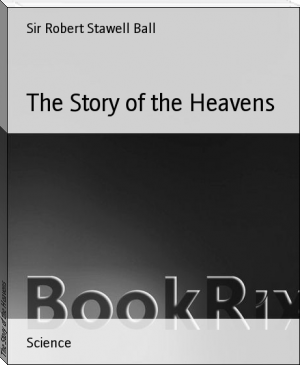
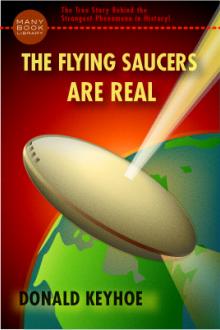

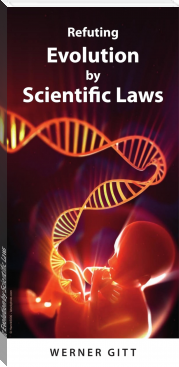
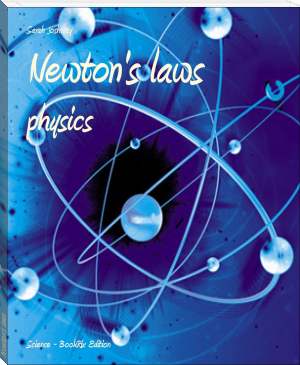
Comments (0)